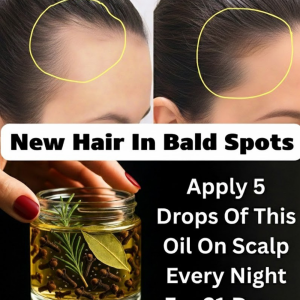Noticing something strange in your child’s hair—whether it’s a small bump, odd texture, or something moving—can be alarming. While some issues may be harmless, others could require medical attention. As a parent, it’s important to stay calm and handle the situation with care and awareness.
This guide walks you through possible causes of hair-related concerns in children, especially focusing on pests like lice and mites. We’ll also cover how to identify symptoms, when to get professional help, and what steps you can take at home.
1. First Signs: What Did You Notice?
Start by examining your child’s scalp closely. Is there something crawling? A patch of eggs? Or maybe just some unusual redness or flaking? Take note of:
- Any movement
- Unusual textures
- Color changes
- Itching or irritation
Use a magnifying glass if needed, and keep a record—photos and notes can be useful for doctors.
2. Common Hair Pests in Kids

Children often share close spaces—schools, playgrounds, camps—which makes them more likely to catch certain pests. The most common include:
- Head lice – tiny, wingless bugs that feed on blood from the scalp. Their eggs (nits) stick to hair shafts.
- Scabies mites – microscopic bugs that burrow under the skin and can sometimes affect the scalp.
- Dust mites – though they don’t live on the body, they can cause allergic reactions, especially in sensitive children.
3. How to Recognize Mites
Mites are very small, often invisible to the naked eye. Instead of seeing them directly, look for:
- Intense itching
- Small red bumps or pimple-like rashes
- Dry or scaly skin
- Irritation around folds of skin or near the scalp
If you’ve recently been in dusty environments or areas with known infestations, this might point to mites.
4. Symptoms You Shouldn’t Ignore

Watch for these warning signs:
- Persistent itching, especially at night
- Red or irritated scalp
- Sores caused by scratching
- Swelling or signs of infection
- Trouble sleeping or increased fussiness in young kids
If symptoms worsen or don’t improve, it’s time to consider medical help.
5. Home Remedies: What Works and What Doesn’t
Some popular home fixes for lice include:
- Mayonnaise or olive oil to suffocate lice
- Fine-toothed combs to remove eggs
- Tea tree oil and other essential oils (always patch-test first)
While many families swear by these remedies, they may not work for everyone. Be cautious, especially with young children or sensitive skin.
6. When to Call a Doctor
If symptoms persist after home treatment, or if your child develops infections or severe irritation, don’t wait—see a doctor. Medical help is also a must if:
- Your child has allergies or a skin condition
- Over-the-counter treatments don’t work
- There are signs of infection (pus, fever, swelling)
A doctor can prescribe stronger treatments or shampoos tailored to your child’s needs.
7. Preventing Hair Infestations

Prevention is key:
- Avoid sharing hats, combs, or pillows
- Teach your child not to touch heads with others
- Wash bedding, clothes, and soft toys regularly in hot water
- Vacuum carpets and furniture frequently
- Keep clutter minimal to reduce mite-friendly spaces
8. The Hidden Risks of Mites
Though they’re tiny, mites can cause big problems:
- Scabies can lead to painful rashes and skin infections
- Dust mites can trigger allergies or worsen asthma
Being aware of how mites spread—and where they hide—can help you reduce exposure and protect your child.
9. Health Impacts of Mites
Depending on the type, mites can:
- Cause extreme itching
- Lead to allergic reactions (sneezing, watery eyes)
- Aggravate asthma or eczema
These effects can be serious if not treated early, so it’s worth staying alert to changes in your child’s skin and breathing patterns.
10. Treatment Options That Work

Effective treatments depend on the cause:
- Lice: over-the-counter shampoos with permethrin or pyrethrin
- Scabies: prescription creams or oral medications
- Allergies: antihistamines or changes to your environment (like air purifiers)
Always follow your doctor’s advice exactly and continue treatment as long as recommended—even if symptoms disappear quickly.
11. Monitoring After Treatment
Once treatment is complete:
- Continue checking the scalp regularly
- Stick to hygiene routines
- Note any recurrence of itching or rash
If the problem comes back, consult a specialist. Sometimes repeated infestations require deeper environmental changes or alternative treatments.
Final Thought
Hair-related issues can be surprising and stressful—but with the right information and care, they’re usually manageable. Stay observant, act quickly, and don’t hesitate to seek professional help when needed.





